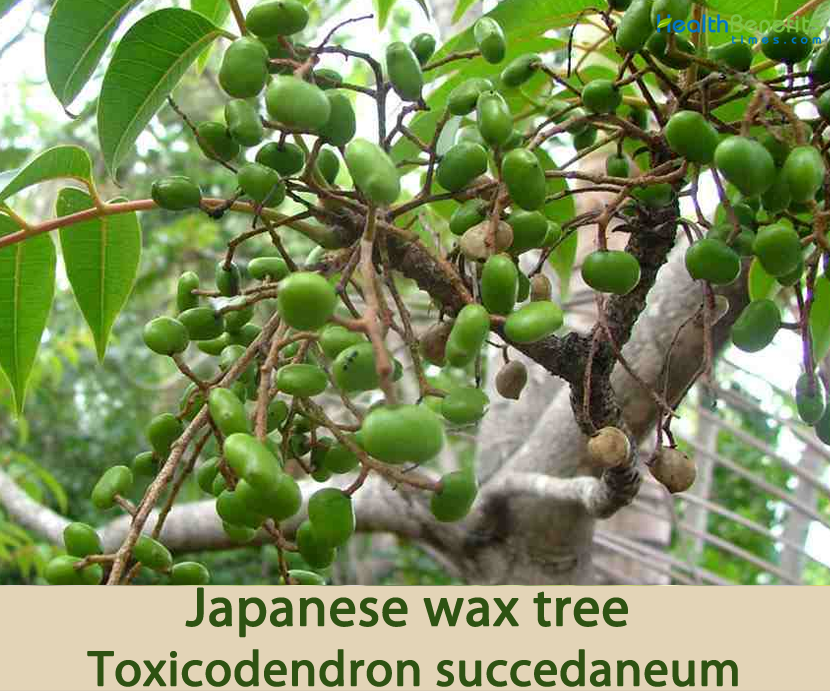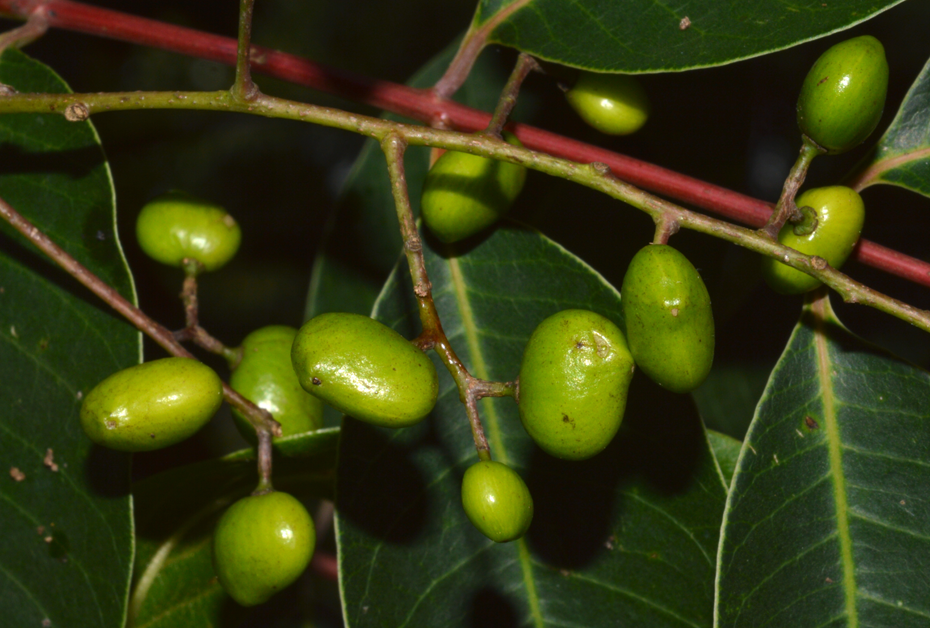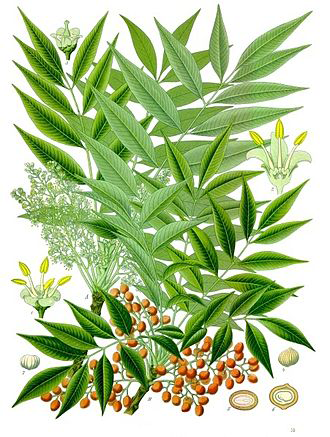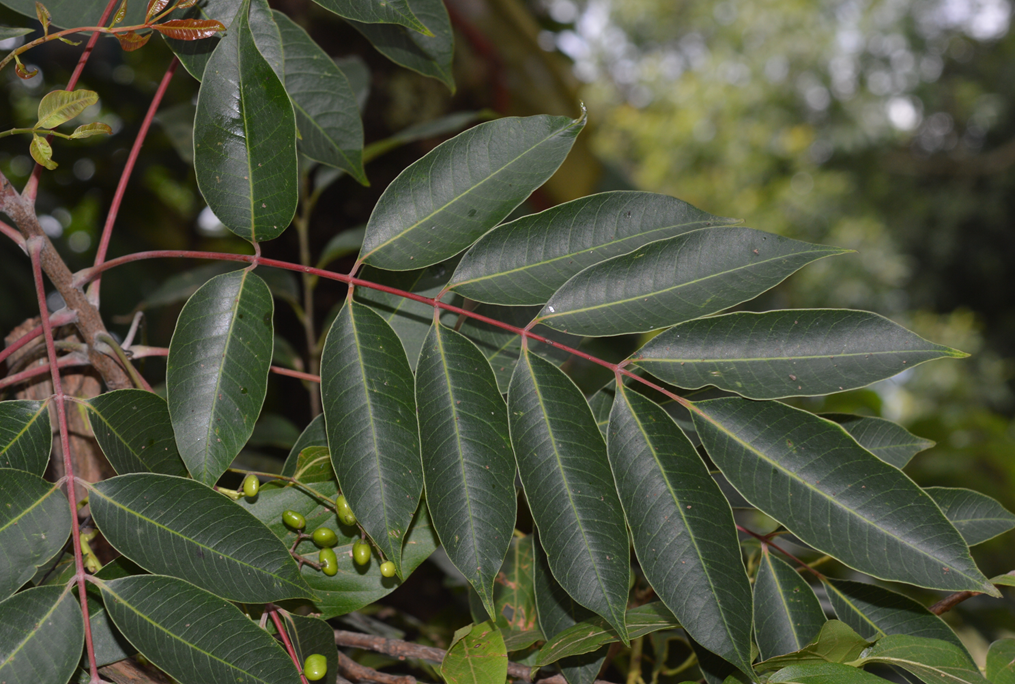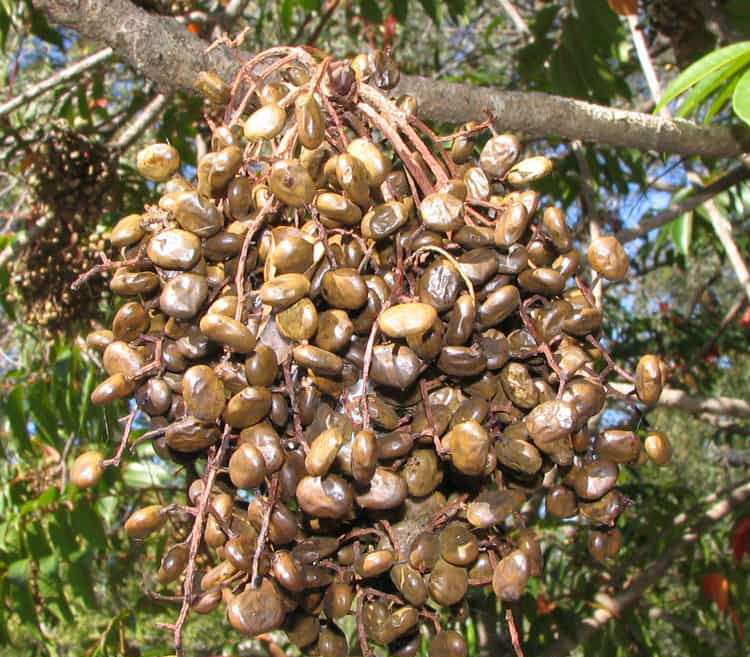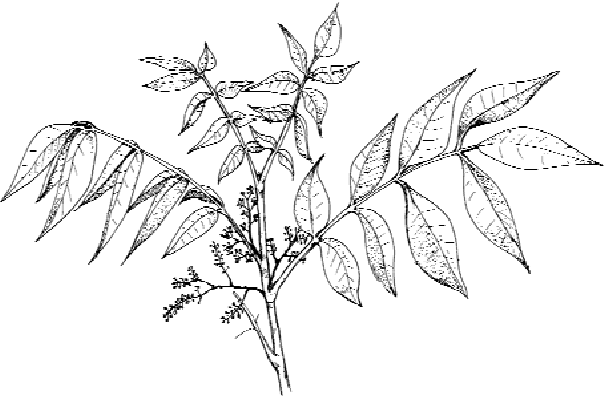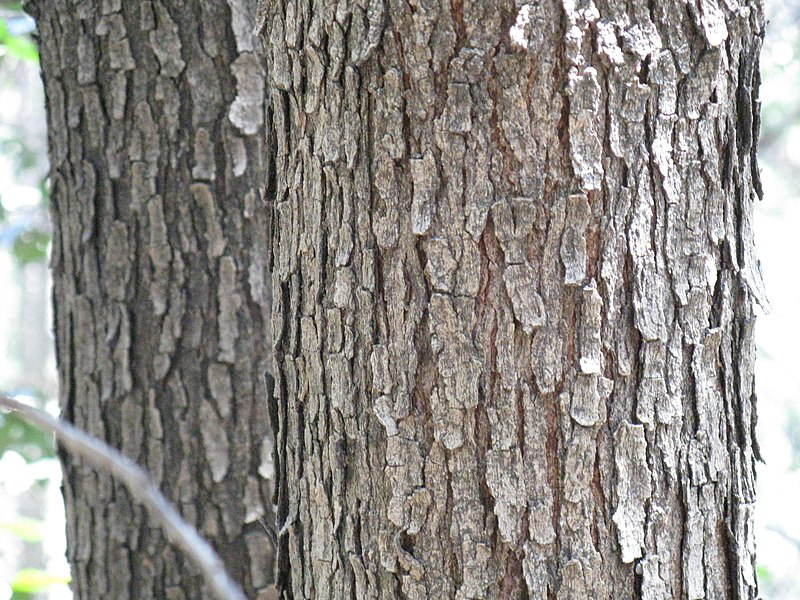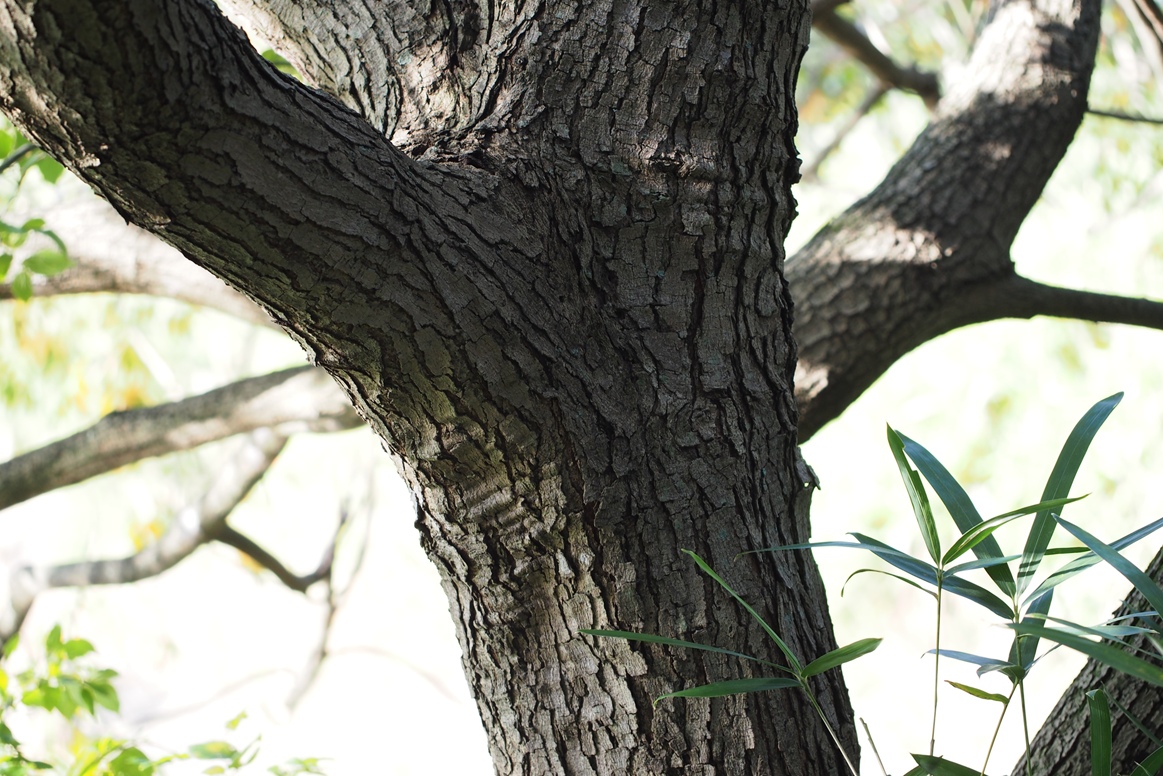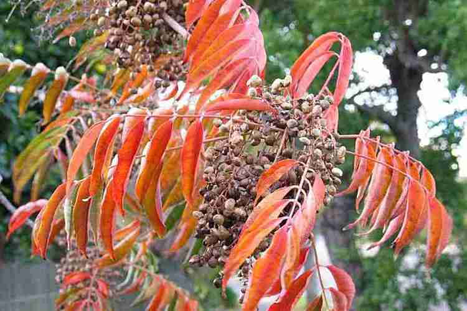Because of its beautiful autumn foliage, it has been planted outside Asia as an ornamental plant, often by gardeners who were apparently unaware of the dangers of allergic reactions. It is now officially classified as a noxious weed in Australia and New Zealand. It is one of the city tree symbols of Kurume, Fukuoka, Japan. This is one of the primary species of Toxicodendron that is harvested on a commercial basis for its sap – this is used to make a varnish that is widely used in Oriental artwork. The tree is also harvested from the wild for local use as a medicine and source of various materials. The larvae of the moths Eteoryctis deversa, Caloptilia aurifasciata, Caloptilia protiella, Caloptilia rhois and Callidrepana patrana feed on Toxicodendron succedaneum.
Japanese Wax Tree Facts
| Japanese wax tree Quick Facts | |
|---|---|
| Name: | Japanese wax tree |
| Scientific Name: | Toxicodendron succedaneum |
| Origin | Asia (Japan, Taiwan, Laos, Malaysia, Cambodia, India, Bangladesh, Bhutan, Nepal, China, Mongolia, Korea, Indonesia, Vietnam, Myanmar and Thailand) |
| Colors | Green when young turning to pale brown or blackish in color when mature |
| Shapes | Drupe that are 5-10 mm long and 7-11 mm across and are borne in large groups |
| Taste | Bitter, astringent |
| Health benefits | Support for diarrhea, nose and gum bleedings, vomiting, dysentery, cough, tuberculosis, fever, asthma, liver ailments, phthisis, varnish poisoning and ear infections |
| Name | Japanese wax tree |
|---|---|
| Scientific Name | Toxicodendron succedaneum |
| Native | Asia (Japan, Taiwan, Laos, Malaysia, Cambodia, India, Bangladesh, Bhutan, Nepal, China, Mongolia, Korea, Indonesia, Vietnam, Myanmar and Thailand) and was introduced to South America. It has been introduced to and is naturalized in Australia, New Zealand, South Africa, Brazil and Cuba |
| Common Names | Japanese wax, Japanese lacquer tree, Japanese tallow tree, Japanese wax tree, Japanese waxtree, poison ivy, poison sumac, red-lac, rhus, rhus tree, rhustree, scarlet rhus, sumac, sumac wax tree, varnish tree, wax tree, waxtree |
| Name in Other Languages | Afrikaans: Was boom Albanian: Pemë dylli Amharic: Semi zafi (ሰም ዛፍ) Arabic: Shajarat alshame (شجرة الشمع), Hubbul khizra Armenian: Mom tsarr (մոմ ծառ) Azerbaijani: Mum ağacı Bengali: Mōma gācha (মোম গাছ), Kaakadsingi, Karkatsingi Bulgarian: vosŭchno dŭrvo (восъчно дърво), sočen toksikodendron (сочен токсикодендрон) Burmese: Hpayaungg pain (ဖယောင်းပင်) Chinese: Là shù (蜡树), ye qi (野漆) Croatian: Vosak, Lojni ruj Cuba: Charum, guao blanco Czech: Vosk strom Danish: Vokstræ, Voks-Giftsumak Dutch: Wax boom English: Wax tree, Japanese waxtree, Red-lac, Rhustree, Scarlet rhus, Sumac, Japanese tallow tree, Japanese wax tree, Red lac, Rhus tree, Scarlet rhus, Wax tree Esperanto: Vaksoarbo Estonian: Vahapuu Filipino: Puno ng waks Finnish: Vahapuu French: Arbre de cire, Arbre à cire, Sumac à cire, Sumac cirier Georgian: Tsvilis khe (ცვილის ხე) German: Wachsbaum, Japanischer Wachsbaum, Scharlach-Sumach., Talg-Sumach, Talggiftsumach Greek: Déntro kerión (δέντρο κεριών) Gujarati: Mīṇanuṁ jhāḍa (મીણનું ઝાડ) Hausa: Kakin zuma itace Hebrew: עץ שעווה Hindi: Mom ka ped (मोम का पेड़), Arkhol, Kaakadsingi, Kakra-singi, Kakrasingi, Karkatsingi, Tantri, kakada sindi Hungarian: Viasz fa, japánlakkfa, viaszszömörce Icelandic: Vaxtré Indonesian: Pohon lilin Irish: Crann céir Italian: Albero di cera Japanese: Wakkusutsurī (ワックスツリー), Hazenoki (ハ ゼノキ), Hazenoki (櫨の木), Ryuukyuu haze (リュウキュウハゼ), Ryuukyuu haze Javanese: Wit lilin Kannada: Mēṇada mara (ಮೇಣದ ಮರ), Kakada shringi, Karkarakashringi, Karkatakashringi Kazakh: Balawız ağaşı (балауыз ағашы) Korean: Wagseu namu (왁스 나무), Gomyangochnamu, geom yang ot na mu (검양옻나무) Kurdish: Dara wax Lao: Tonmai khiphoeng (ຕົ້ນໄມ້ຂີ້ເຜີ້ງ) Latin: Cera ligno Latvian: Vaska koks Lithuanian: Vaško medis, Žvakinis raugmedis Macedonian: Vosočno drvo (восочно дрво) Malagasy: Hazo mandritra Malay: Pokok lilin Malayalam: Meḻuk maraṁ (മെഴുക് മരം) Maltese: Siġra tax-xama Marathi: Rāgācā jhaṭakā (रागाचा झटका), Kaakada shingi, Kakadsingi Mongolian: Lav mod (лав мод) Nepali: Mainakō rūkha (मैनको रूख), Bhaukimallo Norwegian: Voks tre Oriya: Chhimhruk, Chimtouk, Sryngi, ମହମ ଗଛ Pashto: موم موم Persian درخت موم Polish: Drzewo woskowe Portuguese: Arvore de cera, Charão, falsa-aroeira, árvore-da-cera-do-japão Punjabi: Mōma dē rukha (ਮੋਮ ਦੇ ਰੁੱਖ) Romanian: Copac de ceară Russian: Voskovoye derevo (восковое дерево), Japonskíy Sumakh (Японскій Сумахъ), Yaponskoye voskovoye derevo (Японское восковое дерево), Voskovoye derevo (Восковое дерево), Sumakh voskovoy (Сумах восковой), Toksikodendron sochnyy (Токсикодендрон сочный) Sanskrit: Kalinga, Karkatahvaya, Karkatashringi, Karkatasringi, Karkatasrngi, Karkatasrngika, Kulira, Srngi Serbian: Vosak (восак) Sindhi: موم جو وڻ Sinhala: Iṭi gasa (ඉටි ගස) Slovenian: Vosek South Africa: Wasboom Spanish: Arbol de cera, Árbol de la cera, zumaque de Japón Sundanese: Tangkal lilin Swedish: Vaxträd, Vaxsumak, Japanvax, Waxsumak Tajik: Daraxti mumi (дарахти муми) Tamil: Meḻuku maram (மெழுகு மரம்) , Ciranki, Karakkataka cinki, Karkataka cinki, Karkatakam, Karkkadagachingi, Karkkatakacirinki, Karkkatakacirinkimaram, Vakkiracam, Viruntayam, Vitanacam Telugu: Mainapu ceṭṭu (మైనపు చెట్టు), Kakarashingi, Karkkarasringi Thai: T̂n k̄hī̂p̄hụ̂ng (ต้นขี้ผึ้ง), kaen mo, makkak khao, makok kiam Turkish: Balmumu ağacı Ukrainian: voskove derevo (воскове дерево) Urdu: موم کا درخت Uzbek: Mumi daraxti Vietnamese: Cây sáp Welsh: Coeden gwyr Zulu: Umuthi we-wax |
| Plant Growth Habit | Small to medium-sized deciduous shrub or small tree |
| Growing Climates | Roadsides, gardens, forests, lowland, hill forests, lowland thickets waste place, urban bushland, disturbed areas in woodland, along streams in montane forest |
| Plant Size | Up to 7 meters tall with occasional specimens to 15 meters. The bole can be up to 50 cm in diameter |
| Stem | Main stem forms a single, upright (i.e. erect) trunk with greyish-brown coloured bark. |
| Leaf | Compound (i.e. pinnate) leaves are 10-35 cm long and are alternately arranged along the branches and are borne on stalks (i.e. petioles) 3-10 cm long. They consist of 4-7 pairs of leaflets and a single terminal leaflet (i.e. they are imparipinnate), each leaflet being borne on a very short stalk (i.e. petiolule) 1-4 mm long. The leaflets are 4-10 cm long and 1.5-3 cm wide and are elongated |
| Flowering season | July |
| Flower | Flowers are creamy-white to yellowish-green and are clustered into branched flowering heads (panicles) which are 8-15 cm long and hairless |
| Fruit Shape & Size | Round to egg shaped drupe that are 5-10 mm long and 7-11 mm across and are borne in large groups |
| Fruit Color | Green when young turning to pale brown or blackish in color when mature |
| Taste | Bitter, astringent |
| Plant Parts Used | Fruit, barks, leaves |
| Season | September to November |
| Culinary Uses |
|
| Precautions |
|
Plant Description
Japanese wax tree is a small to medium-sized deciduous shrub or small tree with a single trunk and spreading crown. The tree usually grows up to 7 meters tall with occasional specimens to 15 meters. The bole can be up to 50 cm in diameter. The plant is found growing in roadsides, gardens, forests, lowland, hill forests, lowland thickets, waste place, urban bushland, disturbed areas in woodland and along streams in montane forest.
Stems
The main stem forms a single, upright (i.e. erect) trunk with greyish-brown coloured bark. The younger branches are hairless (i.e. glabrous) and smooth in texture, apart from some small raised bumps (i.e. lenticels).
Leaves
The once-compound (i.e. pinnate) leaves are 10-35 cm long and are alternately arranged along the branches and are borne on stalks (i.e. petioles) 3-10 cm long. They consist of 4-7 pairs of leaflets and a single terminal leaflet (i.e. they are imparipinnate), each leaflet being borne on a very short stalk (i.e. petiolule) 1-4 mm long. The leaflets are 4-10 cm long and 1.5-3 cm wide and are elongated (i.e. lanceolate) or narrowly oval (i.e. elliptic) in shape, have entire margins, and taper to a point (i.e. acuminate apices). Leaves are initially bright green or dark green above and slightly greyish or bluish-green underneath, but in autumn they turn bright red, scarlet or crimson in color before they are shed from the plant. They are usually hairless (i.e. glabrous) on both surfaces.
Flowers
The flowers are creamy white, creamy-yellow or yellowish-green in color (2-6 mm across) and borne in large branched clusters (7-20 cm long) near the tips of the branches (i.e. in axillary panicles). Separate male and female flowers are present in these clusters. Each flower has five tiny greenish sepals (about 1 mm long) and five small greenish-yellow or whitish petals (about 2 mm long), and is borne on a short stalk (i.e. pedicel) about 2 mm long. They also have five stamens and an ovary topped with a style and stigma. Flowering occurs mostly during spring and early summer.
Fruits
Fertile flowers are followed by papery fruit (i.e. drupe) that turns from green to pale brown or blackish in color as it ripens. These fruits are 5-10 mm long and 7-11 mm across and are borne in large groups that hang from the branches, and each contains a single hard seed. Seeds are dark brown in color, almost round in shape (i.e. sub-globular), and 3-5 mm across.
Traditional uses and benefits of Japanese wax tree
- It is used as a wash to counteract varnish poisoning.
- The fruit is used in the treatment of phthisis.
- Wax from the fruits is used in ointments.
- It is an ethanolic extract of the leaves exhibits anticancer and antiviral activities.
- It has been using to treat diarrhea, nose and gum bleedings, vomiting, dysentery, cough, tuberculosis, fever, asthma, liver ailments, and ear infections in traditional medicines.
Other Facts
- They can be collected as they fall in the autumn and used as a brown dye or as a mordant.
- The sap is tapped and used as a lacquer.
- In Vietnam, the lacquer is used to produce lacquer paintings, known as sơn mài, from resin of the tree.
- It is much used in Japanese art and needs to be kept in a cool humid place for it to dry properly.
- The Japanese traditionally kept their paintings in a damp cave until the lacquer had dried.
- A yellow dye is obtained from the wood.
- In Asia, T. succedaneum is cultivated for its fruits, from which a wax is extracted.
- Wax obtained from the fruit is used to make candles, floor wax, varnishes, polishes, ointments, plasters etc.
- The wax is also used in traditional Asian medicine.
- Species within the genus Toxicodendron have lacquer in the phloem and are often used for making anticorrosive and decorative paints and dyes.
- In East Asia, in particular in Japan, traditional candle fuel (also called Japan wax) was produced, among other sumac plants; from Toxicodendron succedaneum crushed fruits rather than beeswax or animal fats.
- It is used as a medicinal plant in India.
- Fruits are edible though their consumption is not recommended because of the general toxicity of the plant.
- Wax obtained from the fruit is used as an ingredient in commercial cosmetic preparations as an emollient, binding agent and viscosity controller.
Side effects of Japanese wax tree
Severe painful allergic reactions can occur between 12 hours and 7 days after contact. These reactions include severe dermatitis that begins with a rash, redness, itching and blisters where skin has made contact with the tree. Localized swelling of the face, arms and legs is often related with the rash. All of these symptoms usually last 7 to 10 days. However, chronic sufferers or more sensitive individuals may experience more extreme symptoms over a longer period of time. Contact with any part of the tree can cause these symptoms, but it is the sap that can cause the most severe reaction. Sensitivity to this plant can have an accumulative effect over a number of years, with initial exposure not necessarily causing a significant reaction. However, subsequent contact will result in stronger allergic reactions.
Prevention and Control
Due to the variable regulations around (de)registration of pesticides, your national list of registered pesticides or relevant authority should be consulted to determine which products are legally allowed for use in your country when considering chemical control. Pesticides should always be used in a lawful manner, consistent with the product’s label.
Control
Physical/mechanical control
Small plants of Japanese wax tree can be dug out. The entire stem should be dug out in order to discourage suckering. When larger trees are cut down, their remaining stumps need to be treated with herbicide to prevent regrowth. Because the species is highly toxic, personal protective equipment such as overalls, hats, protective eyewear or face shields, dust masks and gloves, should be used by operators, even when dealing with small seedlings.
Chemical control
In Australia, the herbicides glyphosate and picloram have been used to control infestations of T. succedaneum.
References:
https://www.itis.gov/servlet/SingleRpt/SingleRpt?search_topic=TSN&search_value=506461#null
http://www.hear.org/pier/species/toxicodendron_succedaneum.htm
https://pfaf.org/user/Plant.aspx?LatinName=Toxicodendron+succedaneum
https://www.cabi.org/isc/datasheet/47426
https://gd.eppo.int/taxon/TOXSU
https://en.wikipedia.org/wiki/Toxicodendron_succedaneum
https://dergipark.org.tr/en/download/article-file/1427029
http://tropical.theferns.info/viewtropical.php?id=Toxicodendron+succedaneum&redir=Rhus+succedanea
https://plants.usda.gov/home/plantProfile?symbol=TOSU


